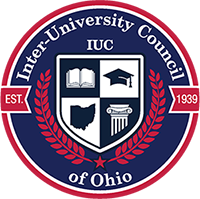The Inter-University Council of Ohio (IUC) was established in 1939 as a voluntary educational association of Ohio’s public universities. Today the association represents Ohio’s 14 public universities. Together, these institutions offer a broad range of associate, baccalaureate, graduate, and professional programs.
Our Purpose
To facilitate the development of common interest and concern of IUC members and to assist in sustaining and improving the quality of public higher education. IUC also engages in public relations, research and government liaison work on behalf of its members.
Our Mission
To sustain a consortium that establishes a comfortable forum which fosters idea exploration and problem solving; facilitates relationship building and trust among and between presidents and senior campus officers; and enables members to achieve together—through collaboration and cooperation—what institutions cannot likely achieve alone.
To learn more about the IUC's history, click here:

